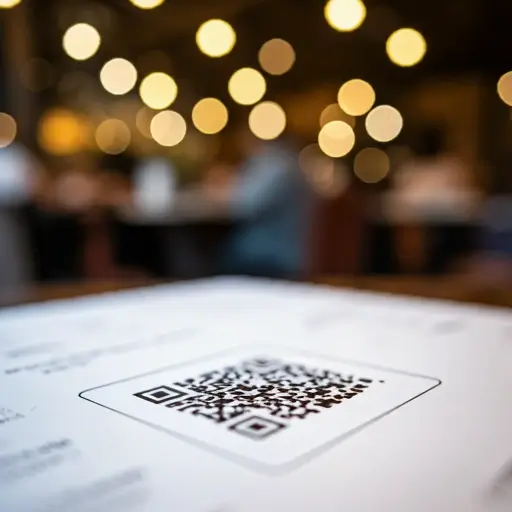
Understanding QR Codes: A Comprehensive Guide
Introduction
QR codes are everywhere these days, from restaurant menus to business cards. They have become an integral part of our daily lives, making it easy to access information with just a scan. But what exactly is a QR code, and how does it work? In this article, we’ll delve into the world of QR codes, exploring their history, uses, and how you can create your own. We’ll also touch on safety concerns and introduce tools like Shortle that can enhance your QR code experience.
What is a QR Code?
Definition and Basic Explanation
A QR code (Quick Response code) is a type of matrix barcode that can be read by digital devices. Unlike traditional barcodes, QR codes can store much more information and are quickly readable by smartphones, making them highly versatile.
Example of QR code

History and Origin
QR codes were invented in 1994 by Denso Wave, a subsidiary of Toyota, to track automobile parts during manufacturing. Over time, their use has expanded into various industries due to their efficiency and ease of use.
How QR Codes Work
QR codes store data using patterns of black squares on a white background. When scanned, a QR code reader decodes this pattern to reveal the stored information, which can be a URL, text, contact details, or other data.
Can QR Codes Be Colored?
Standard vs. Colored QR Codes
While QR codes are traditionally black and white, they can indeed be colored. Colored QR codes function the same way as standard ones but offer aesthetic and branding advantages.
Benefits of Colored QR Codes
Colored QR codes can enhance brand recognition and make your codes more appealing. They can also help your QR code stand out, increasing the likelihood that people will scan it.
Examples of Colored QR Codes
Many companies use colored QR codes to match their branding. For instance, a company with a blue logo might use a blue QR code to maintain brand consistency.
Are QR Code Generators Safe?
Security Concerns with QR Codes
There are legitimate concerns about the safety of QR codes. Malicious QR codes can direct users to phishing sites or download malware. It’s essential to use trusted QR code generators and scanners.
How to Ensure Safety
To ensure safety, always use reputable QR code generators, check the URL before scanning, and use a QR code scanner with security features.
Trusted QR Code Generators
Some trusted QR code generators include Shortle, QRCode Monkey and GoQR.me. These platforms offer secure, reliable services for generating QR codes.
QR Generator
What is a QR Generator?
A QR generator is a tool that allows you to create QR codes. These tools can encode various types of data into a QR code, such as URLs, text, and contact information.
Features to Look For
When choosing a QR generator, look for features like customization options, analytics, and security measures. Some advanced generators also offer bulk creation and API integration.
Popular QR Generators
Popular QR generators include Shortle, QRCode Monkey and GoQR.me. These platforms provide user-friendly interfaces and a range of features to meet different needs.
Shortle
Introduction to Shortle
Shortle is a versatile tool that combines URL shortening and QR code generation. It offers a simple yet powerful solution for creating and managing QR codes.
Benefits of Using Shortle
Shortle provides features like customizable QR codes, detailed analytics, and secure link shortening. It’s an excellent choice for businesses looking to enhance their QR code strategy.
How Shortle Works
Using Shortle is straightforward. You can generate QR codes, shorten URLs, and track performance all from one platform, making it a convenient tool for marketers and businesses.
How QR Code is Generated
Basic QR Code Generation Process
The process of generating a QR code involves encoding data into a format that can be read by QR scanners. This data is then represented by black squares on a white background.
Tools and Software for Generating QR Codes
There are many tools available for generating QR codes, including online generators like Shortle and software applications like Adobe Illustrator.
How to Generate a QR Code
Step-by-Step Guide
- Choose a QR code generator.
- Select the type of data you want to encode.
- Enter the data.
- Customize the design (optional).
- Generate and download your QR code.
Best Practices
Ensure your QR code is clear and not distorted. Test the QR code with multiple devices before using it publicly to ensure it works correctly.
How Do You Make a QR Code?
Detailed Instructions
Making a QR code is simple:
- Go to a QR code generator website.
- Input the information you want to encode.
- Customize the appearance if desired.
- Click ‘Generate’ and download the QR code image.
Common Mistakes to Avoid
Avoid adding too much data, which can make the QR code hard to scan. Ensure there is enough contrast between the QR code and its background.
Shortle Link Shortener
What is Shortle Link Shortener?
Shortle Link Shortener is a tool that shortens URLs, making them easier to share and manage. It integrates seamlessly with QR code generation for added convenience.
Advantages of Using Shortle for Link Shortening
Shortening links with Shortle makes them more manageable and trackable. Shortle provides analytics to help you understand how your links and QR codes are performing.
Integration with QR Codes
Shortle allows you to create QR codes that link to shortened URLs, providing a streamlined way to share and track links.
When QR Code Invented
Timeline of QR Code Development
The QR code was invented in 1994, and its development has been marked by increasing adoption and technological enhancements over the years.
Key Milestones
Key milestones include the standardization of QR codes, the rise of smartphones with QR code scanning capabilities, and the integration of QR codes in marketing and payment systems.
Which QR Code Generator is Safe?
Criteria for Choosing a Safe QR Code Generator
Choose generators that offer HTTPS connections, have good user reviews, and provide security features like URL checking and encryption.
Recommended Safe QR Code Generators
Safe QR code generators include Shortle, QRCode Monkey and GoQR.me, all of which have strong security measures and positive user feedback.
QR Code with Image
What is a QR Code with Image?
A QR code with an image incorporates a logo or picture within the QR code. This can enhance branding and
make the code more visually appealing.
How to Create a QR Code with Image
Use a QR code generator that supports image embedding. Upload your image, adjust the size and placement, and generate your QR code.
Use Cases
QR codes with images are often used on marketing materials, business cards, and product packaging to enhance brand visibility.
QR Code with Logo
Importance of Branding in QR Codes
Adding a logo to a QR code reinforces brand identity and makes the code more recognizable to customers.
Steps to Add a Logo to a QR Code
- Choose a QR code generator that supports logo embedding.
- Upload your logo.
- Position the logo within the QR code.
- Generate and download the QR code.
Examples
Many brands use QR codes with logos on their promotional materials to drive engagement and brand recognition.
QR Code to Website
Linking QR Codes to Websites
Linking QR codes to websites is one of the most common uses. It provides a quick and easy way for users to access web content without typing a URL.
Benefits for Businesses and Marketers
QR codes can drive traffic to websites, track user engagement, and provide a seamless customer experience. They are particularly useful for promotional campaigns.
How to Optimize QR Code Links
Ensure the URL is short and memorable. Use a link shortener like Shortle to create trackable, clean URLs that enhance the user experience.
QR Code and Link Generator
Combining QR Code and Link Generation
Using tools that combine QR code and link generation simplifies the process and ensures consistency. These tools often provide additional features like analytics and customization.
Tools for Dual Functionality
Tools like Shortle offer both QR code and link generation, providing a comprehensive solution for marketers and businesses.
Best Practices
Always test your QR codes and links before deployment. Monitor analytics to understand user behavior and adjust your strategy accordingly.
Conclusion
QR codes have revolutionized the way we share information, providing a quick, easy, and versatile method for connecting the physical and digital worlds. Whether you’re a business looking to enhance your marketing efforts or an individual curious about this technology, understanding QR codes and how to create them is invaluable. As we move forward, QR codes will continue to evolve, offering even more innovative ways to engage and connect.
FAQs
What are the main uses of QR codes today? QR codes are used for a variety of purposes, including marketing, payments, product tracking, and information sharing.
Can QR codes be used for payments? Yes, QR codes are widely used for mobile payments, allowing users to make transactions quickly and securely.
How can I scan a QR code? You can scan a QR code using your smartphone’s camera or a dedicated QR code scanner app.
Are QR codes free to use? Generating and using QR codes is generally free, though some advanced features on certain platforms may require a subscription.
What should I do if a QR code doesn’t work? Ensure the QR code is not damaged or distorted, and try scanning it with a different device or app.


